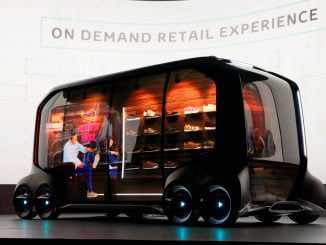NASHVILLE, Tenn. — In the same way a dog does, the car you drive says a lot about you.
If you roll up to the school drop-off line in a Mercedes-Benz G Wagon, you want people to notice you. You’re not going for subtle. The same is true if you own the Porsche 911 GT3 RS. Or a helicopter.
On the other hand, for those with no need or want of flash in their automobile, we have the 2023 Toyota Corolla. Never has there been a finer chariot for people wishing to go from Point A to Point B and, after a quick stop off for coffee at Point C, back to Point A again.
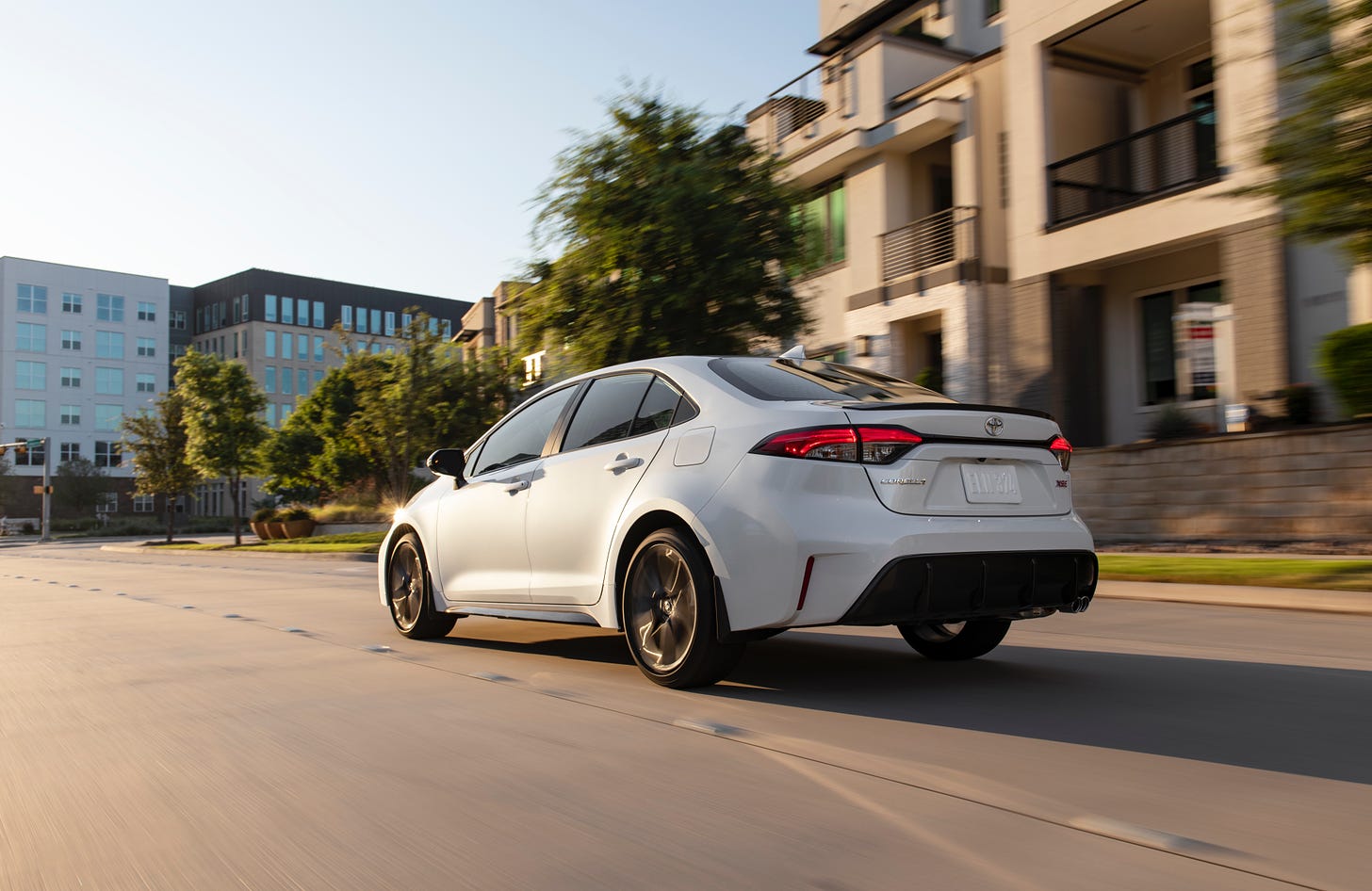
The Corolla gets a mid-cycle refresh this year, with a larger engine in the base LE trim, improved fuel economy, and an upgraded version of Toyota Safety Sense. The new 8-inch infotainment screen with standard wireless Apple CarPlay and Android Auto will draw the biggest applause for many buyers.
My first car was a Dodge Neon that, while theoretically having pretty decent fuel economy (not the way I drove it), didn’t have Toyota Safety Sense, Apple CarPlay, or even anti-lock brakes. This new Corolla has (almost) more tech inside than a Mercedes-Benz S-Class did 20-something years ago when I was first driving.
Active safety features are essential for both new and experienced drivers. We know that features like automatic emergency braking (AEB) reduce front-end collisions by as much as 40 percent (thanks to research done by Volvo), and safety features can really help keep distracted drivers safe.
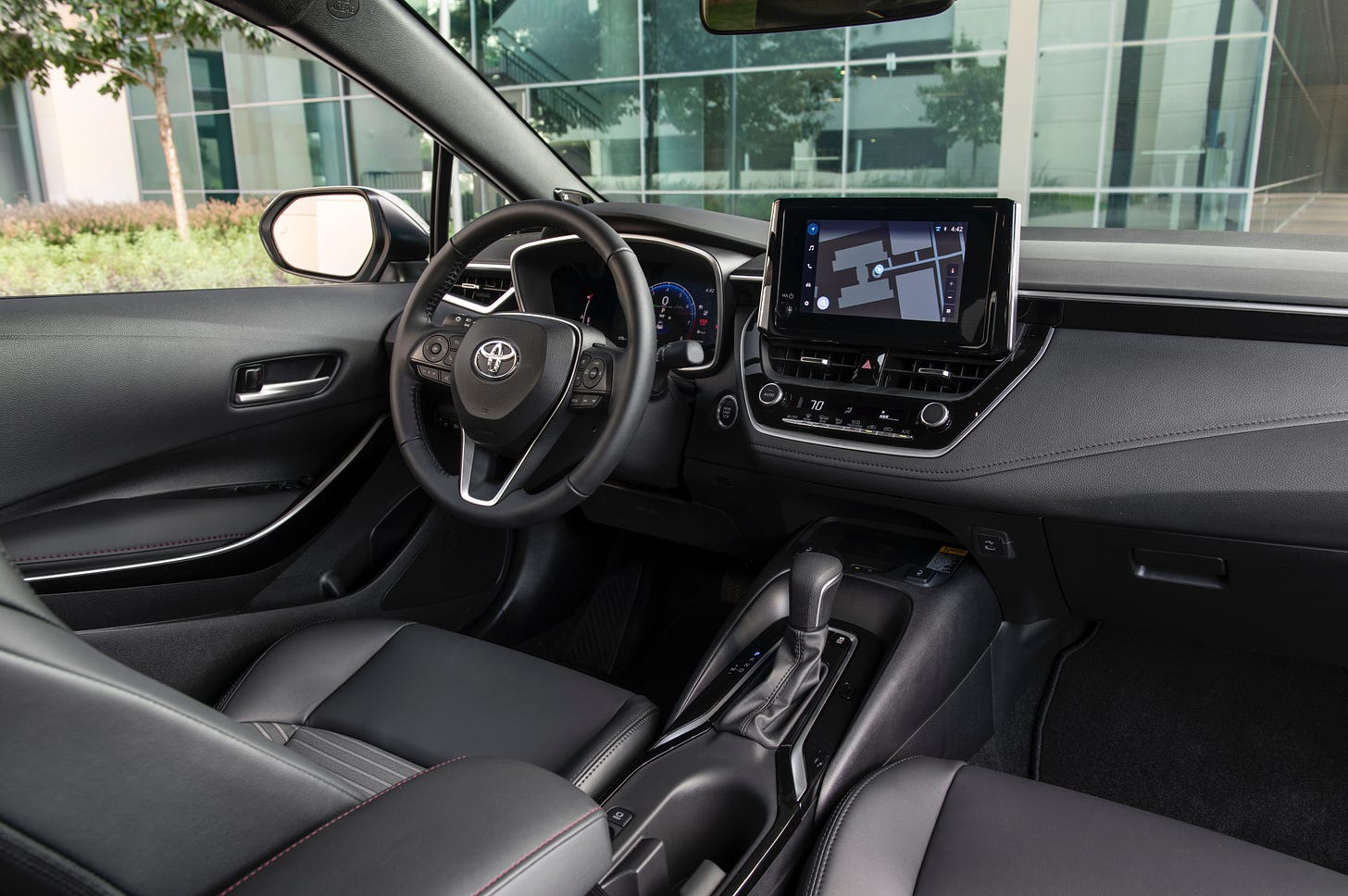
The Corolla not only has AEB with pedestrian detection, something which used to only be available on high-end vehicles, but it has adaptive cruise control, lane departure warning, and lane keeping assist. It even has active lane centering as standard equipment in a car that starts under $23,000. Blind spot monitoring is optional, as are parking assist sensors front and rear with automatic braking to keep you from bumping into obstacles.
Proactive Driving Assist is new for 2023, helping to provide braking and steering support in curves or to control the distance between you and the car or bicyclist in front of you. The fact that these features have made their way from luxury cars down to the most entry-level of vehicles is astonishing and something to be celebrated. It wasn’t that long ago that anti-lock brakes weren’t standard on all cars, which seems unthinkable now.
The amount of safety tech in this Toyota Corolla exceeds that offered in even some current luxury cars. Annoyingly, Toyota — and they’re not alone in this — uses a bunch of its own names for these safety technologies, making it difficult for buyers to compare features across competitors. Someone should do something about that.
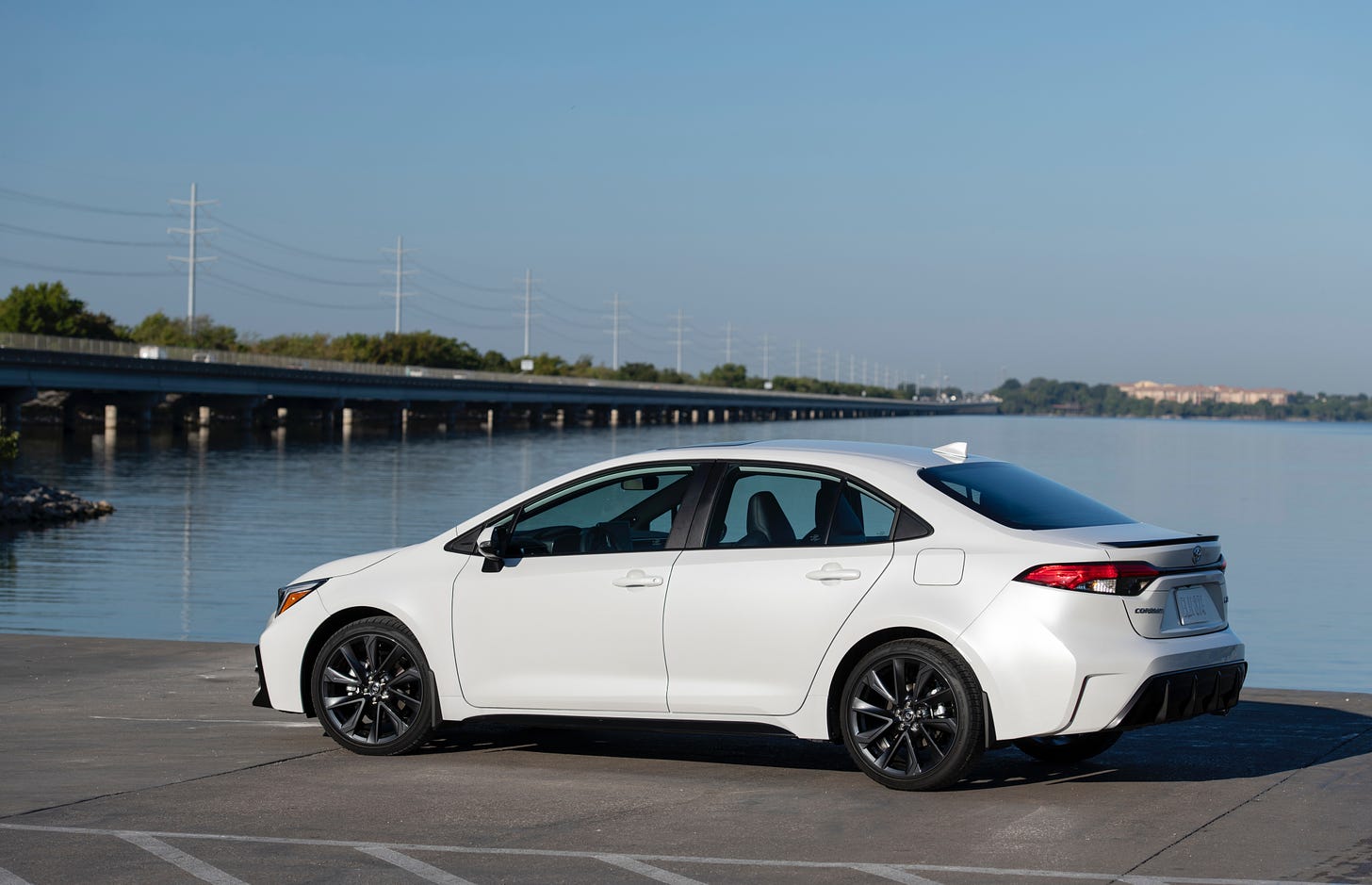
Under the hood is an entirely unremarkable 169 horsepower 2.0L four-cylinder that provides adequate power. However, it does get 41 mpg highway and 35 mpg combined, which is impressive for a non-hybrid.
The car is assembled in America at a Toyota facility in Mississippi, and the new Corolla’s infotainment system was engineered by Toyota’s Connected Technologies team in Texas.
There’s a voice assistant called “Hey Toyota,” available cloud-based navigation, integrated streaming from Apple Music and Amazon Music, and an available Wi-Fi 4G LTE hotspot through AT&T for $20 a month for unlimited data.
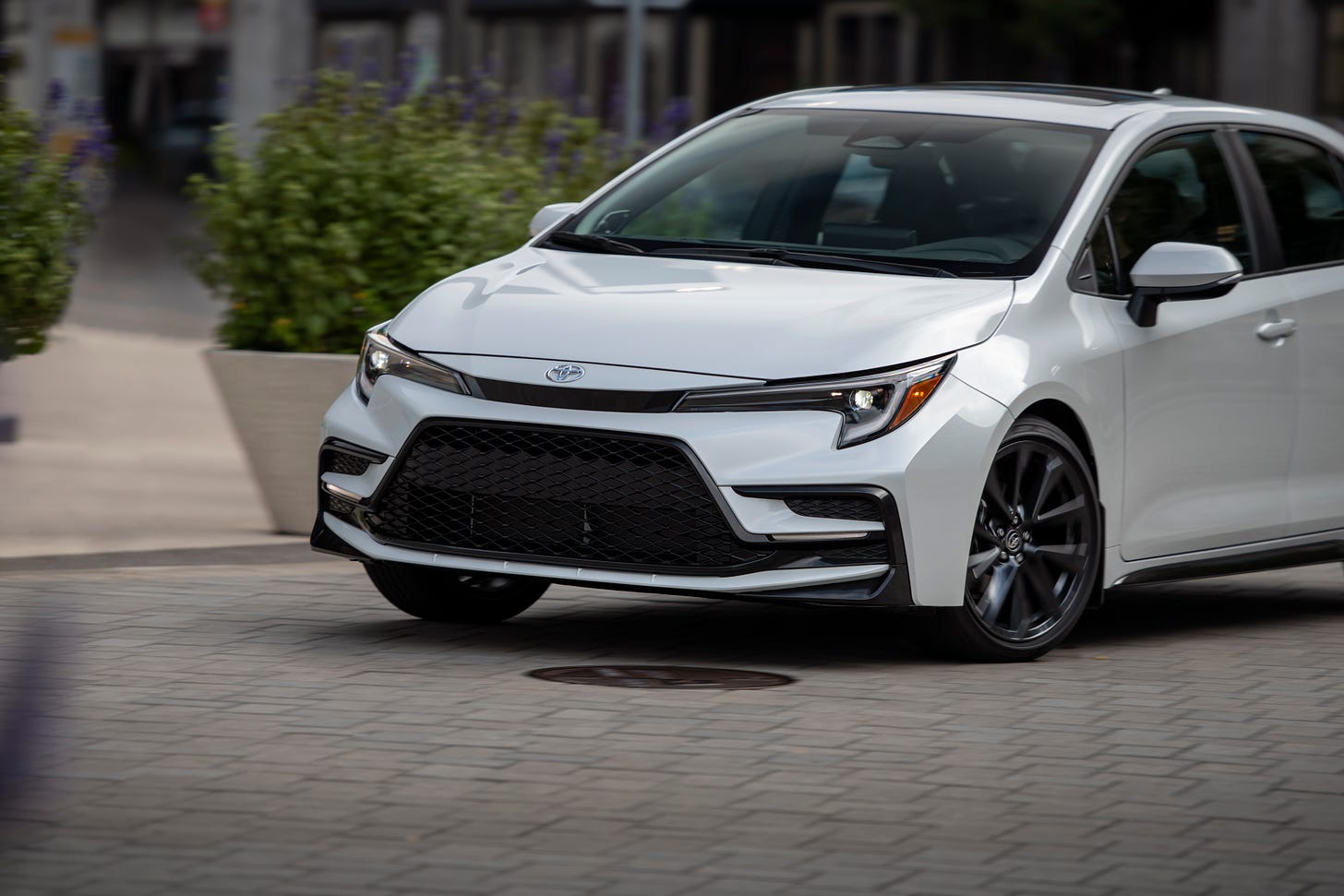
Those are nice, but I’m guessing most people will use the wireless CarPlay or Android Auto and plug their phone into one of the four USB-C ports in the car (two in front, two in rear). The entry-level stereo is nothing to write home about, though the SE and SXE grades get an improved JBL version that is decent.
There’s also a ten-year subscription to Toyota Safety Connect, offering an emergency button for instantly calling 911, roadside assistance, and automatic collision notification in the event of a crash. Think of it as Toyota’s version of GM’s OnStar. It can even be used to find the location of a stolen car.
The Corolla isn’t the fastest or flashiest car in the world, but it is remarkably well-equipped and very affordable. I’d be okay buying this car today, never mind getting one like it when I learned to drive. We didn’t even have iPods back then, never mind satellite radio, Apple Music, and wireless CarPlay.
Kids these days don’t know how good they have it.



